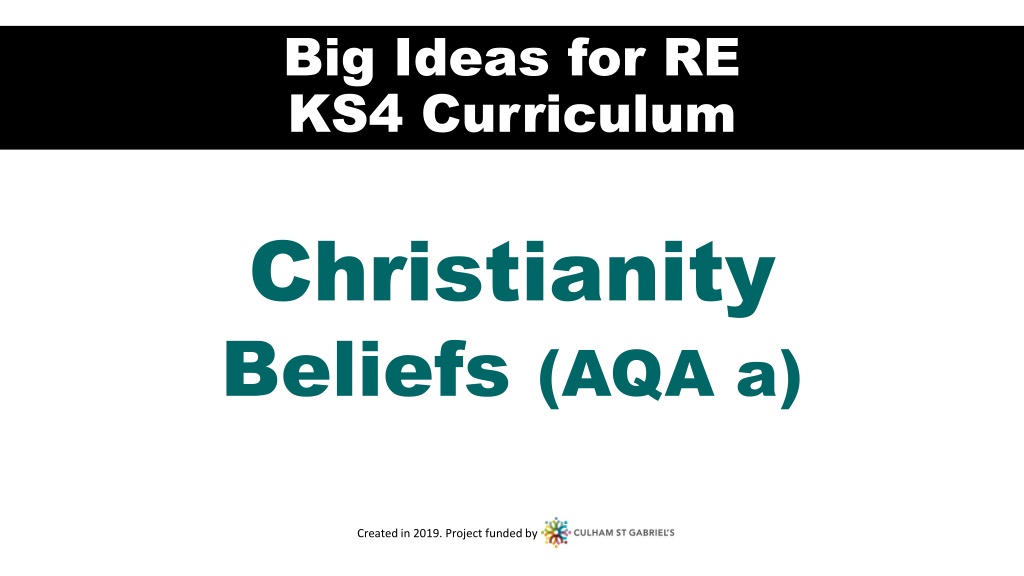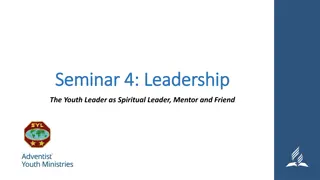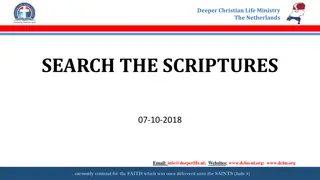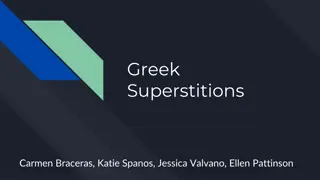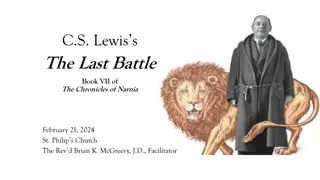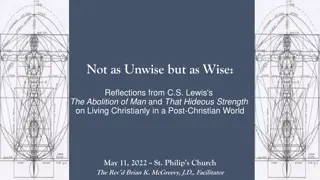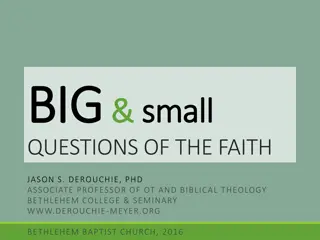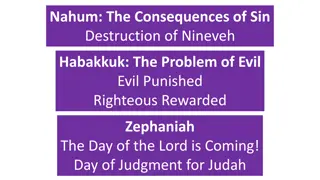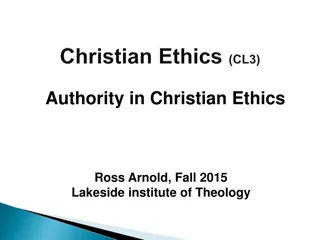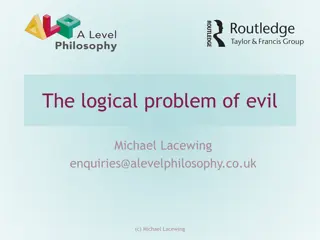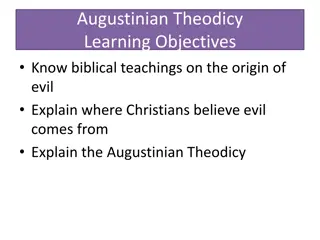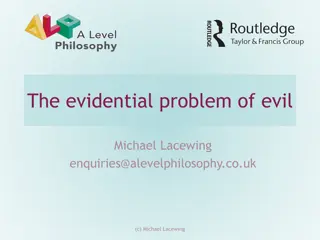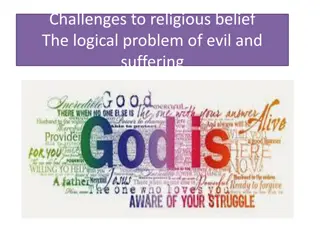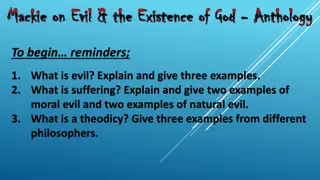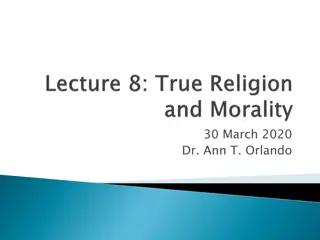Understanding the Christian Response to the Problem of Evil
Explore the philosophical problem of evil in relation to belief in God, delve into different Christian responses, such as the theodicies of Irenaeus and Augustine, and consider the implications of evil and suffering on the nature of God in the context of Christian beliefs.
Download Presentation

Please find below an Image/Link to download the presentation.
The content on the website is provided AS IS for your information and personal use only. It may not be sold, licensed, or shared on other websites without obtaining consent from the author. Download presentation by click this link. If you encounter any issues during the download, it is possible that the publisher has removed the file from their server.
E N D
Presentation Transcript
Big Ideas for RE KS4 Curriculum Christianity Beliefs (AQA a) Created in 2019. Project funded by
9 9- -10: Does God Have to be Good? 10: Does God Have to be Good? BIG IDEAS LEARNING PHILOSOPHY: problem of evil DIVERSITY: different Christian responses to problem of evil From the spec loving and just, and the problem of evil and suffering God as omnipotent, Learning outcomes: Explain why evil in the world is a philosophical problem for belief in God Explore two Christian responses to the problem of evil Present reflections based on Christian responses to evil RESOURCES 9 Theodicies Website: http://letthechildrenlive.org/ 10 Theodicy Snowflake 10 Evil and suffering
Lesson 9 Starter: display the website of the charity Let the Children Live! (http://letthechildrenlive.org/) from last lesson. Read about the work, look at pictures and videos to get a sense of the situation of street children in Colombia. Discuss in groups: why is this a problem for belief in a loving God, an omnipotent God, an omniscient God? [question on next slide] Define the problem of evil [defined on slide] Look at Augustine quote [on slide]: Either God cannot abolish evil or he will not; if he cannot, he is not all-powerful, if he will not, then he is not all-good. (Augustine, Confessions). How far do the class agree? Define theodicy [definition on slide] Give groups a few minutes to discuss the problem of evil. Can they come up with a solution? Listen to answers. Categorize solutions offered by students into (1) solutions which abandon belief in God, (2) solutions which abandon belief in a good or powerful God, and (3) solution which maintain belief in a good and powerful God Sheet 9 theodicies represents two ways Christian thinkers have explained the problem of evil and maintained faith in God; Irenaeus (2nd Century CE) and Augustine (4th 5th Century CE) Split the class into two- half will focus on Augustine and half on Irenaeus. Ask groups of 4 to read the information and prepare a short explanation of the thinker s solution, a news report, drama, a lesson, a church sermon, etc. Instructions on following slide. As a class watch all presentations
Why is the fact of children living on the streets a problem for belief in: An all-powerful God An all-loving God The problem of evil is a philosophical problem: how can a loving, all-powerful God exist alongside suffering and evil? Theodicy is an attempt to resolve the problem of evil. An explanation for how a loving, powerful God can exist in the face of suffering and evil. Either God cannot abolish evil or he will not; if he cannot, he is not all-powerful, if he will not, then he is not all-good. (Augustine, Confessions) theodicy from Theos= God + dike= justice (Gk)
Theodicy Presentations 1) Read your theodicy (Irenaeus or Augustine) 2) Discuss how best to present this theodicy (some ideas) 3) Work out the main message- what major idea are you communicating? 4) Write your main message 5) Create a presentation of your main message in your chosen format 6) Think about how best to communicate your main message to your audience As a church sermon As a news report As a short piece of drama or story As a lesson or assembly As a rap or poem
Lesson 10 Starter: students complete 10 Theodicy snowflake individually. Instructions on the document. Give time for groups to compare and discuss their answers. Revisit Augustine or Irenaeus notes from last lesson. Ask groups to summarise either theodicy in 20-word slogans, as for a T-shirt, poster or mug. Introduce three further views on the problem of evil, found on 10 Evil and Suffering . Read Zoroaster s view together. Can students summarise this view into more general terms, as a general statement (such as good and evil are both aspects of life or good and evil are equally powerful )? Do any of the class agree with the general statement? Ask groups to read and summarise Mill and the Free Will argument to general statements. Share. Do any agree? Create a four corners activity: in each corner place a statement. Students stand at the statement they want to discuss. Give time to discuss then share answers and ideas. Statements: (1) If God exists, God must be good ; (2) If God created suffering, God cannot be good ; (3) Pain is necessary to appreciate pleasure ; (4) Life is suffering, whether there is a God or not . Final discussion: does God have to be good?
